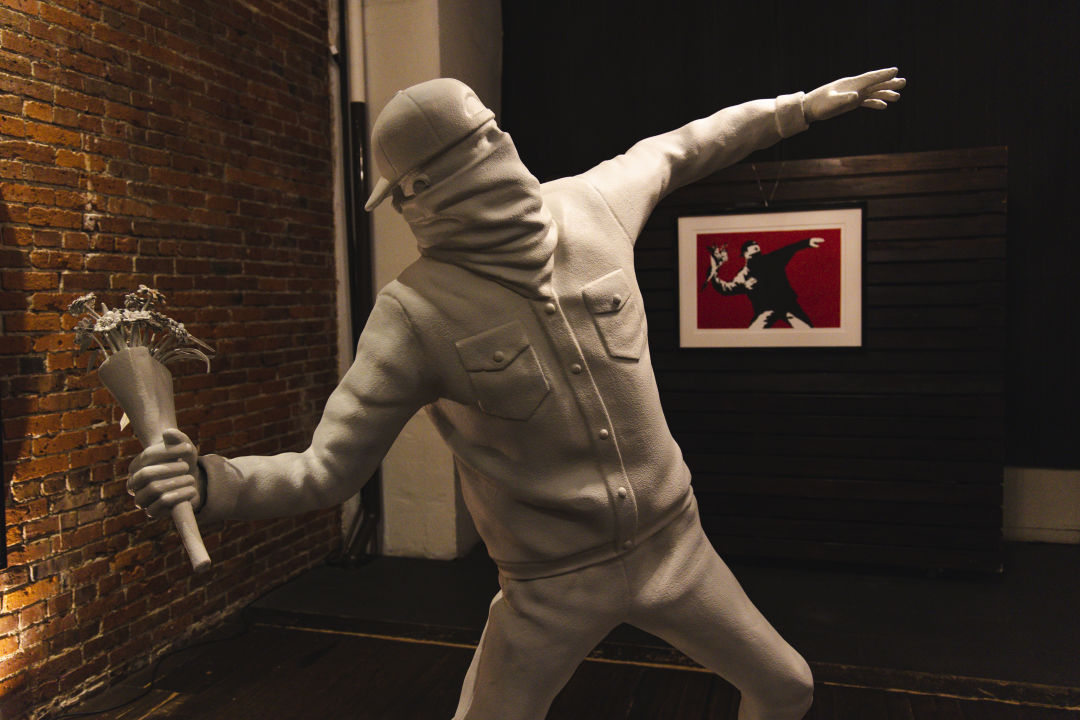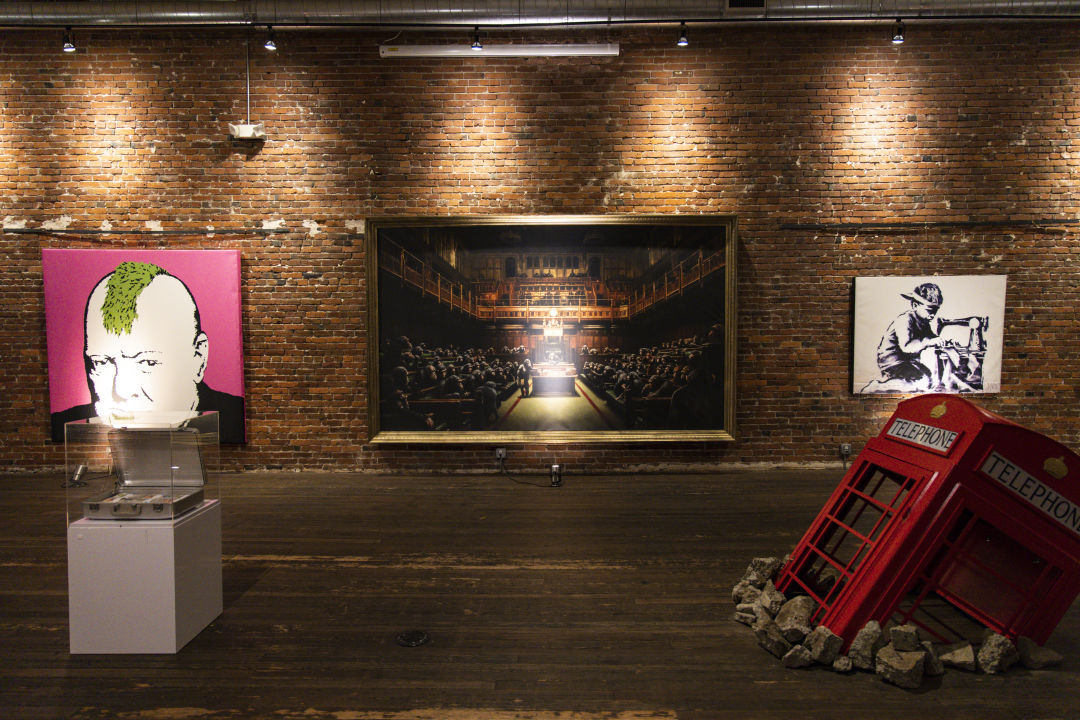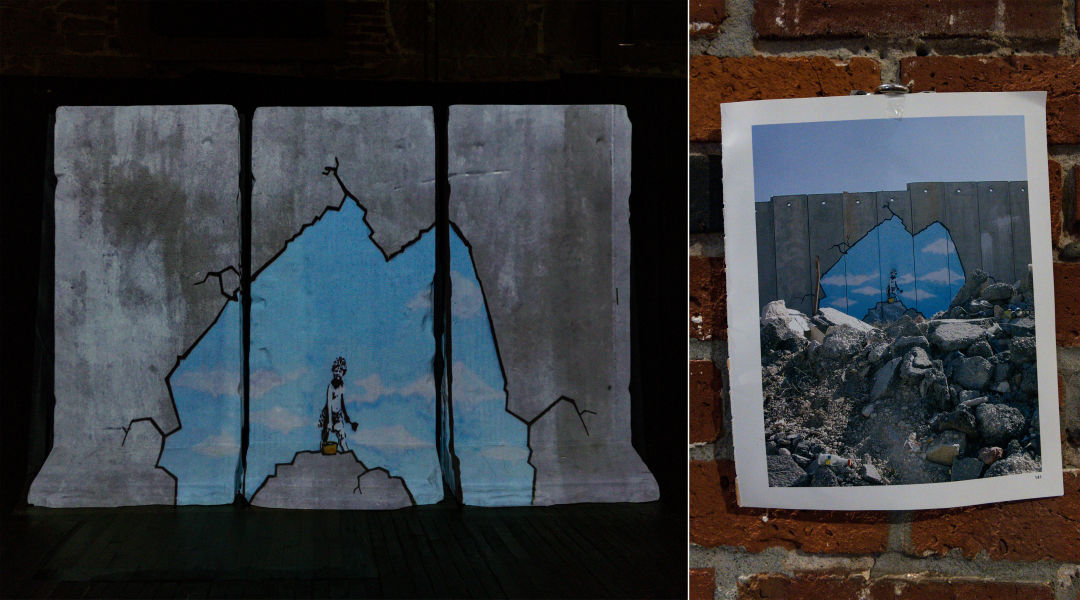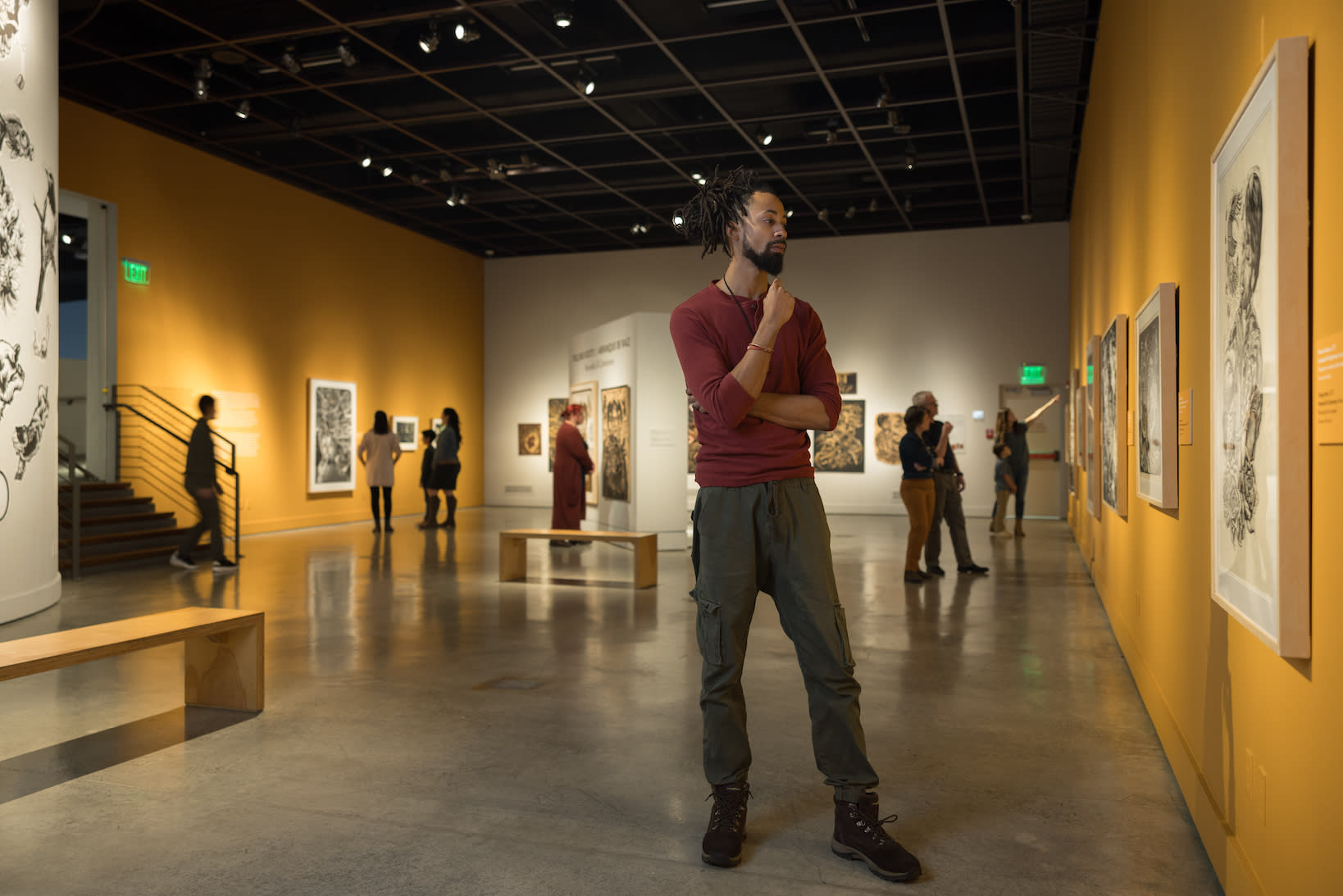Banksyland Rejects the Art Gallery Convention

Image: Taylor McKenzie Gerlach
There’s something enthralling about a secret identity. Street artist Banksy, known for the satirical bent of his works, occupies a unique place in the public imagination, having managed to remain an enigma throughout his decades-long career. During its Seattle stop, the touring Banksyland exhibition aims to shed new light on the reclusive artist’s work via a subversive anti-museum experience, says entertainment manager Chris De La Rosa.
Banksyland, which ends its run at AXIS Pioneer Square on June 16, touts its 22-city tour as an unauthorized, uncensored look at some of the artist’s most famous works alongside select, lesser-known passion projects. Banksy himself had no direct involvement in curating the show. It was created by folks passionate about street art and sharing his work with a broader audience. So while there are no formal artist statements accompanying the works, as you’d expect in a more traditional gallery setting, Banksyland worked with the artist’s team to stay true to the decidedly political nature of work that critiques militarism, consumerism, and greed.

Image: Taylor McKenzie Gerlach
The physical space of the exhibit—a dark, exposed-brick warehouse with blacked-out windows and meditative music thrumming through four open-concept rooms—forces visitors to focus on the art to the exclusion of all else. Some pieces are tiny, Barbie-size renditions of Banksy’s painted works, like a young girl clad in Velcro shoes and clutching a bomb like a teddy bear. Others are huge original paintings that take aim at oppressive laws like France’s burqa ban.
The center of gravity of all these works is Banksy’s political ethos, something that is enabled, in part, by his anonymity. Because he can’t be defined by biographical details, like ethnicity, nationality, or age, Banksy is granted a unique license by the public to comment on global issues, De La Rosa says. But that anonymity is a double-edged sword, as the contradictory celebrity it fosters can at times overshadow the message.
A prime example of the artist’s lesser-known humanitarian endeavors can be found in a short looping video on display in the exhibition, which showcases a real-life yacht covered in Banksy graphics. Rather than dismantling historic bridges, this boat cruises the Mediterranean sea with a group of European activists trained in search and rescue, searching for the capsized vessels of African migrants ignored by European police and rescue forces. The entire operation is funded by proceeds Banksy received from the sale of his artwork, and the ship has rescued hundreds of migrants.
Video is an integral element of the exhibition, in large part because Banksy’s choice of canvases renders curation a challenge. The logistical—and ethical—complications of airlifting a concrete section of a wall to a museum or gallery far outweigh any benefit. Instead, event organizers built an imitation concrete wall, and a projector scrolls works along its expanse.

Banksyland employs creative methods and crowdsourcing to share Banksy's less-easy-to-transport works.
Image: Taylor McKenzie Gerlach
Originally painted on the Palestinian side of the West Bank Wall, an image of a small child with braided hair appears. She is lifted over the faux concrete by a bouquet of balloons, embodying hope for populations confined within militarized borders. Eventually the image fades out, replaced by another.
Several pieces, like a giant portrait of Winston Churchill with a green mohawk giving big Sex Pistols energy, are exclusive to the Seattle show. At each stop, the exhibition adds fresh works so returning visitors have a unique experience. Many of the pieces are loaned from private collectors, some are owned by Banksyland, and others have been brought by visitors.
You’re welcome to pin up a printed photo of Banksy’s work you saw out in the wild on the exhibition wall, transforming the space into more of a communal art collective, deliberately lacking the sterile, highly regulated quality of a gallery. That’s possibly the most salient part of this exhibit—it’s designed to turn the experience of visiting a traditional art institution on its head. And in line with the ephemeral nature of Banksy’s work, it won’t be around for long.




